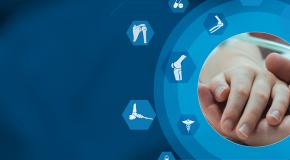Leaving the darkness, seeing the light: A focus on people living with rare bone diseases is an Economist Intelligence Unit briefing paper, sponsored by Ipsen, a global pharmaceutical company. This independent research covers rare bone diseases and the patient experience in the US and Europe with policy lessons for healthcare professionals and policymakers. Review of the evidence in the literature and interviews with representatives of clinical practice and patient organisations were undertaken to help inform our research and this report. Our thanks are due to the following for their time and insights (listed alphabetically):
- Inês Alves, founder and president, ANDO (National Patient Organization for Skeletal Dysplasia), patient expert and representative, European Reference Network for Rare Bone disorders (ERN BOND), EuRR-Bone registry member and chair of the European Rare Bone Forum, Portugal
- Natasha Appelman-Dijkstra, clinical scientist and head at the Center for Bone Quality, Leiden University Medical Centre, Netherlands
- Eric Rush, associate professor of paediatrics, University of Missouri Kansas City School of Medicine; clinical geneticist, Children’s Mercy Kansas City, US
- Laura Tosi, director, Bone Health Program at Children’s National Hospital, Washington DC, US
- Charlene Waldman, director, Rare Bone Disease Alliance, US
Executive summary
Approximately 5% of all rare diseases are rare bone diseases. And while there are more than 460 officially recognised rare bone diseases, each with different manifestations, the majority of patients will ultimately need complex, multi-disciplinary care and lifelong management that can include therapies and surgeries. For many of these, there is no known treatment.
In addition to the clinical complications, rare bone diseases are often plainly evident in the person’s stature, appearance and mobility. The symptoms are often debilitating, distressing and painful. The impact of rare bone diseases therefore extends quite significantly into psychological, social, financial and economic areas.
To bring light to the challenges faced by people living with rare bone diseases, their caregivers and the healthcare professionals that support them, The Economist Intelligence Unit embarked on a study to better understand the patient perspective and the factors that impact it.
Our research found there is much work to be done to improve the care pathways for people living with rare bone diseases and their caregivers. While there is diversity in symptoms and lifelong impact among rare bone diseases, there are common lessons for policymakers about the patient and caregiver experience in accessing appropriate healthcare and support.
Issues of note include:
- There are few clinical experts managing rare bone diseases, and access to specialist clinics can be challenging in the US and Europe.
- Education and support resources for clinicians, patients and their families are increasing, but more research needs to be undertaken, and lessons learned could increase patients’ quality of life and care.
- Great advances are being made in understanding the pathogenesis of rare bone diseases and their treatments, but disseminating information to patients where needed is an ongoing challenge.
- Patient registries are numerous but disjointed. Strong efforts are being made in Europe to create a shared registry, while similar efforts under way in North America are so far less successful.
- There is a significant emphasis on paediatric research and clinical care, which is critically important. However, as patients eventually transition into adulthood they are often left without direction from experts managing their condition.
- There are currently no cures for rare bone diseases and very few have targeted treatments, however, there have been great therapeutic advances in recent years and more are on the horizon. This is underpinned by developments in genetic diagnosis and greater understanding of the mechanisms involved in bone function and development.






